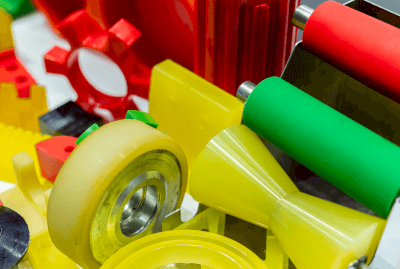What Is a Plastic Engineering Compound?

Engineering plastics are a class of plastics known for their superior performance compared to conventional plastics. Many of them exhibit excellent strength and heat resistance, making them essential in various machinery applications. Additionally, they share the advantages of being lightweight and cost-effective while delivering high performance, making them promising alternatives to metals. Among plastic engineering compounds, those with exceptionally high performance are often referred to as super plastics, and ongoing research explores their applications in diverse products.
Applications of Plastic Engineering Compounds
Plastic engineering compounds come in various types, each tailored to specific properties, and find applications across a wide range of devices based on their intended use. Examples include automotive parts, electrical products, and small electronic components. Compounds with outstanding impact strength and durability are chosen for parts subjected to prolonged and heavy forces. Moreover, most plastic engineering compounds exhibit excellent heat resistance, making them suitable for use in heated equipment or high-temperature environments. Compounds with chemical resistance are occasionally used in laboratory equipment.
Principles of Plastic Engineering Compounds
Several types of engineering compounds are currently under development, and here are five of their main characteristics:
- Polyacetal
This material offers excellent fatigue resistance and boasts high abrasion and insulation properties. However, it can only be produced in an opaque form. - Polyamide
This material is known for its exceptional strength and chemical resistance. However, it has a high affinity for water absorption, causing it to expand and lead to size discrepancies when exposed to moisture. - Polycarbonate
With outstanding heat and cold resistance, this material can be used within a wide temperature range (-40°C to 120°C). However, its chemical resistance is relatively low, necessitating caution when used with certain chemicals. - Modified polyphenylene ether
This material exhibits excellent electrical properties and minimal water absorption. However, it is incompatible with organic solvents as it dissolves in them. - Polybutylene terephthalate
Resistant to friction and abrasion, this material offers excellent electrical insulation properties. Nevertheless, it is vulnerable to hydrolysis, and its heat resistance is somewhat limited.
Medical Plastic Engineering Compounds
Medical plastic engineering compounds must meet specific criteria, including excellent heat resistance, chemical resistance, corrosion resistance, and biocompatibility.
For example, polyphenylene sulfide resin (PPS), known for its exceptional heat resistance, chemical resistance, and mechanical properties, is employed in medical tubing.
Polyetheretherketone resin (PEEK) is recognized for its high biocompatibility, outstanding chemical resistance, mechanical properties, and is used in applications such as bone fixation aids, spinal implants, orthopedic implants, craniofacial implants, and artificial tooth roots. Polysulfone resin (PSU) exhibits excellent hydrolysis resistance, chemical resistance, and hygienic properties, making it suitable for dialysis membranes in artificial kidneys and medical devices.
Polyethersulfone resin (PES) offers excellent mechanical properties, chemical resistance, including resistance to hot water and chemicals, flame resistance, and moldability. It finds use in contact lens sterilization containers and syringe syringes.
Adhesion Technology for Plastic Engineering Compounds
Engineering plastics are extensively used across various fields, particularly in automotive parts where stringent quality and weight reduction requirements apply.
Automotive components utilize materials such as polybutylene terephthalate resin (PBT) and polyphenylene sulfide resin (PPS), known for their long-term stability in high-temperature environments.
One of the major challenges in applying engineering compounds to automotive parts is ensuring proper bonding between components.
Surface properties of plastic engineering compounds tend to be stable, which can sometimes result in insufficient adhesive strength. As a result, extensive research has been conducted to enhance adhesion.
For engineering plastics used in demanding environments, such as high temperatures in automotive parts, annealing (heat treatment) is generally applied to parts to ensure dimensional stability before bonding.
However, annealing treatment forms a fragile layer on the component’s surface, leading to reduced adhesion. Research has shown that removing this fragile layer can improve adhesion.